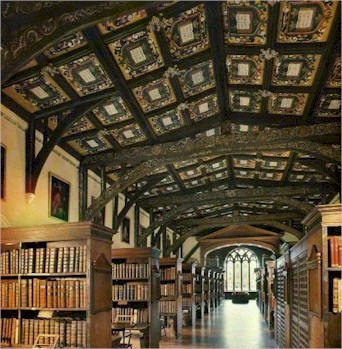When I started the program at the University of Washington, I had seven years' of experience as an instructor of college composition and introductory literature courses. Under such circumstances, it might be easy to assume that I would be comfortable in any teaching environment. However, my comfort with teaching is directly proportional to my comfort with the subject matter: when I am confident in my area of expertise, then I have no trouble with taking on a teaching role. When it came to library science, though, I felt like a novice, and any opportunities I had to provide bibliographic instruction were new experiences, despite the years I had spent in front of a classroom.
Bibliographic Instruction
Because of my teaching experience, it seemed apt that I should become involved in teaching students about library services. However, I had not seen such instruction sessions and did not know what they entailed. To prepare for teaching sessions myself, I observed several classes that were held in the library. The librarian had already consulted with the instructor of the course, who would accompany his/her students to a classroom equipped with computers. During the session, the librarian would teach students how to use resources that were related to their assignment or field. For instance, a library session for psychology students would focus on databases like PsycINFO while a session for English students would address the MLA Bibliography.
After observing a number of library sessions for various kinds of courses, I first was offered the chance to teach a class to new students at the University of Washington. I leapt at the opportunity to use my teaching skills in the context of a library. Because I had consulted with the course's instructor, I had a good sense of what needed to be covered; students were to become familiar with basic catalog searches and find specific information on the Patriot Act. I had developed a lesson plan based upon the assignment, created hand-outs, found the library's site on the Patriot Act, and felt prepared for the class. I was under the impression that I would not feel nervous because of my background in teaching.

The British Museum
However, I found that I was ill at ease when the students arrived; it took me a moment to find my footing. Then, it took me another moment to become accustomed to the use of technology in the classroom. I had not used a computer to demonstrate writing techniques or to analyze the theme of a novel. While it was fairly easy for me to become used to showing students how to navigate websites, I was unprepared for how computers would affect our communications. When teaching, I regularly check the expressions of my students to see what they comprehend. When students are staring at a computer screen, however, it is impossible to glean much from their expressions.
With this new dynamic in mind, I prepared for my next session, which required students to locate a source based upon an essay that they had read in class. This time, I created a website and fully incorporated technology into my lesson plan. I found that I was much more relaxed because I had designed a stronger lesson plan that would let me see how much they had learned in the library session, so I was not relying non-verbal cues. By the end of the session, I wanted my students to have either located or put a hold on an appropriate source. This concrete learning objective helped me to ascertain whether my students had understood the information. I was no longer surprised by their devotion to the computer screen and found it much easier to use technology to serve the students. And I'm pleased to report that my teaching methods, levels of comfort, and instructional effectiveness increased with each library session that I taught. That I continued to improve makes me confident about my abilities in the future.
Homework Help
When considering my experience with teaching, I realized that I had usually taught incoming college students. I had little experience with teaching anyone from another age group. In order to expand my teaching repertoire, I signed on to participate in the Homework Help program at the Seattle Public Library. After meeting with the Teen Services Librarian who was organizing the program at a local branch, I had the chance to work with elementary school students.
I was nervous when I started because, although I had taken courses in children's materials, I have not spent much time with children either personally or professionally. I was concerned that I would not have a good rapport with the students and that I would be terrified by their math and science questions. I imagined children staring at me and whispering to their friends while I searched my brain for answers about fractions, the digestive system, the moon, or any other topic that they may be learning.
However, I found that it was easy to communicate with the students that I worked with during Homework Help. While the students came from different backgrounds and were from different grades, they all seemed to focus on finishing their work. Some students were new to English, and that made the help sessions doubly useful since the children had the chance to practice speaking English. And when faced with dreaded questions about fractions, I found that I did not have to play the role of the expert grown-up that kids might envision. Instead, I explained that my memory was a bit rusty, and I worked through the problems with them. I found this technique to especially useful because it ensured that we went through the process of learning how to multiply fractions.

The Oxford Library
From this experience, I realized that I could admit I did not know the answers as long as I followed that statement up with an offer to help find those answers with the student. Instead of relying on expertise, I threw myself into the learning process, which makes me a better teacher. And I discovered that I can communicate well with students from other age groups by focusing on the one thing that is always central to instruction: active involvement in the learning process.
Information Literacy
When I started studying bibliographic instruction, I became instantly interested in the concept of information literacy. As a former teacher, I was drawn to the educational aspect of librarianship and felt that librarians could become actively involved in helping students develop analytical skills. In order to learn more about bibliographic instruction and information literacy, I looked at the web pages of many academic libraries, and I became involved in information literacy projects at the University of Washington Libraries.
I was particularly inspired by the web pages that librarians had set up for specific classes. I perused several pages and considered how I might prepare similar sites, especially if a class had an interdisciplinary focus. I focused on a course that I had taken at the University of Oregon during my previous graduate career: Literature and the Environment. In such a class, students should be introduced to databases and resources regarding both literature and environmental science, fields which are traditionally unconnected. I designed a sample class web page for this course that could be used by students to find resources at UO's Knight Library that they would need to complete research for this course.
My interest in using electronic communication to further library instruction also led me to develop a wiki that students could use for group projects. As a site where students could easily revise papers and share information, a wiki seemed like a good tool in collaborative projects. That students are drawn to technology suggests that the development of wikis for classes could help students to analyze and discuss information outside of class. I would suggest that librarians need to take an active role in collaborating with instructors by finding creative ways to share information, and, hopefully, my development of a wiki represents new steps we might take.